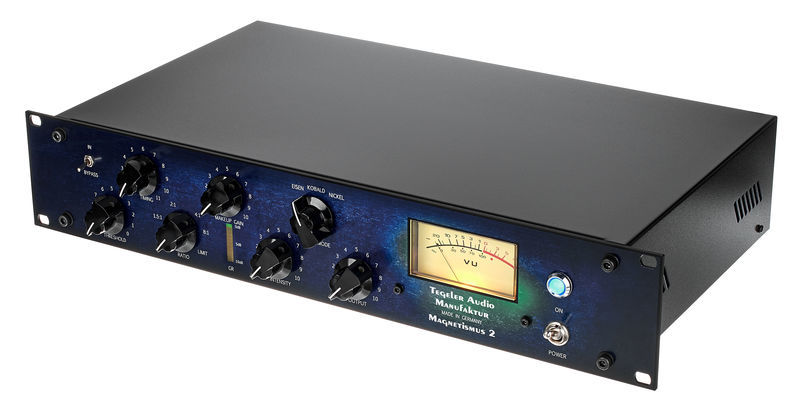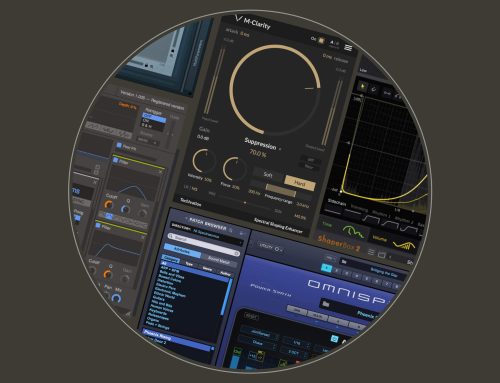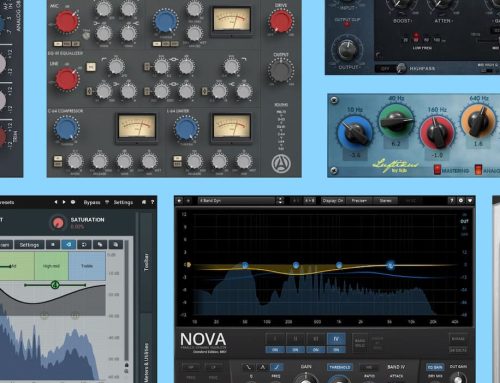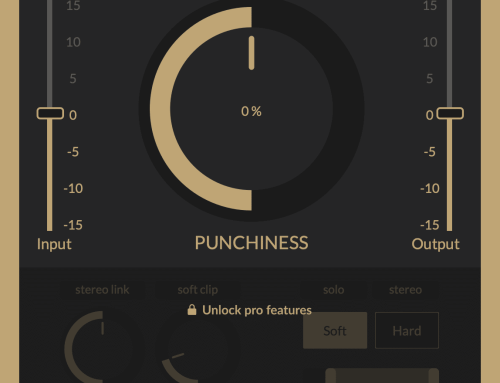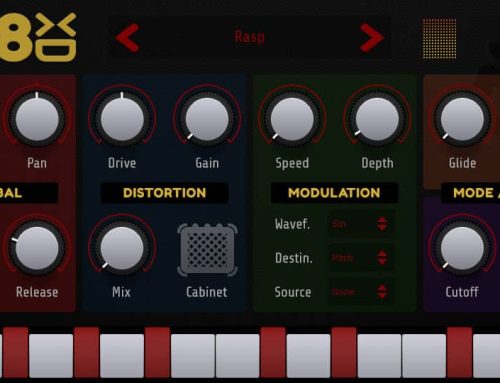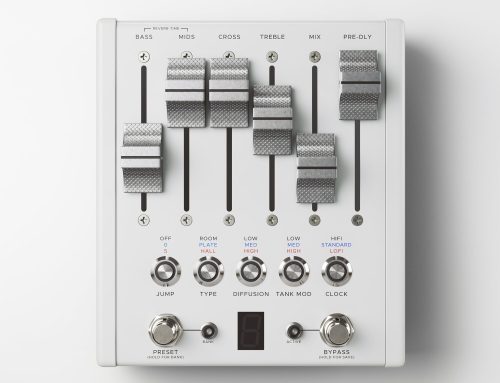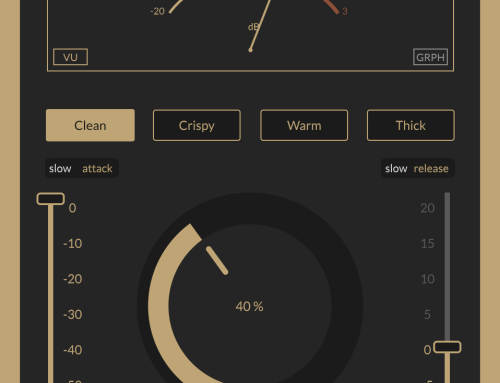Intro
The Berlin-based analog gear-maker Tegeler Audio Manufaktur are carving their own vision for analog processing rather than copying older proven designs. Earlier this year we reviewed their Creme and Tube Summing Mixer, which were both exceptional devices. Now it’s time for their Magnetismus 2.
As its name suggests this device draws inspiration from magnetic tape. However, it has the functionality of a VCA compressor, harmonic-distortion & saturator all in one box. The German manufacturer sells this package as a transient shaper. If you’re not confused yet, take a look at the “Flux” control, which determines the type of saturation. Its name suggests magnetic tape, yet the 3 available Flux settings are labeled with materials used in transformers.
In short, the Magnetismus 2 is a stereo processor, which is made up of two separate topologies. The first is a VCA compressor and the second a saturator/harmonic distortion. The combination of both in one device makes a fully-functional transient shaper.

Controls
The VCA is equipped with a Threshold, Timing (Set Attack & Release times), Variable Ratio (1:1 to Limit), and Makeup Gain. It also has its own dedicated LED meter showing the gain reduction.
My initial reaction to the Fairchild-670-style Timing knob was one of disappointment, but only because I relate VCAs to group-processing in the style of an SSL Bus-compression. The lower Timing values on the Magnetismus have quick attack and release times, whilst the higher values represent the opposite, with no presets available for slow attack and fast release combinations. However, after using the unit for while, I understood how crucial this style of Timing control is for the performance of the Magnetismus and for the user-experience. We’ll get to that later.
The Saturator is equipped with Intensity, Flux Mode (saturation type), and an Output control- knob. The Makeup Gain doubles as an Input Gain control when the Saturator is used on its own, without any compression – smart.
In addition, the unit is equipped with a true bypass switch and a single large VU meter, which can only indicate the outgoing signal of the saturator and not the general output level of the device.
Lastly, all the knobs are stepped with either large or small steps, which improves recall-ability and is definitely a nice touch by the company.
Build Quality
The overall build is solid, with the knobs and switches feeling heavy and sturdy. Like all German engineering, the name of the game here is efficiency. The chassis is held together by just a few screws, which isn’t a bad thing as they are cleverly placed. The large VU meter is attached to the chassis with only 2 tiny screws, which might not scream confidence, but still holds it tightly in place.
Like all other Tegeler devices we’ve used in the past, the Magnetismus 2 is worryingly light. The reasons for that become apparent when we open up the chassis and are presented with excessive empty space, which suggests the device could’ve been a 1U unit. That however is not a testament to its performance and quality of sound, nor it’s an attempt by the company to misguide the buyers. It is rather Tegeler’s way to enhance the user-experience with more space on the front plate, which is necessary when we get the unit fired-up.

Functionality
Once we spent some time with this machine we quickly realized the Magnesmus 2 requires both hands on the wheel for most of the time. All the controls work in relation to each other and having the layout across a 2U faceplate is crucial for being creative whilst searching for the desired sound.
This is one of those devices, which you have to work really hard to find a bad result with. You can simply turn knobs even without knowing what they are doing until you find what you are looking for. In essence, the unit has a very broad sweet-spot and can be incredibly helpful not only to experienced engineers but to those who lack certain knowledge and time on the job.
The Compressor is easy to use. Once we up the Threshold and Ratio, all we have to do is turn the Timing knob until we find the desired blend between punchiness and sustain. Then we just have to back off the Threshold and Variable-Ratio until we’re happy.
Not having to fiddle with separate Attack and Release controls allows for quick auditioning of the transients with fast decision-making. The exact timings are not labeled on the faceplate and can be found only in the manual. Those numbers, however, are slightly irrelevant as they could’ve named this control “Punch 0-100” and it would not have made any difference to how I use it.
The Saturator is even easier to use. The Flux controls the type and color of saturation whilst the Intensity controls the amount.
Equally, we can control the amount of saturation with the Gain and Output moving in opposite directions, much like an actual tape machine.
So where does the magic come from?
The VCA part of the Magnetismus is pretty straight forward. The “mojo” comes from the saturator circuit, which as we discussed earlier appears to be rather confusing with its “Flux” modes.
“Flux” found on tape machines represents the magnetic radiation of the charged particles hitting the tape from the record-head. That magnetic force is often called magnetic Flux and its values determine the amount and color of the tape saturation.
While the Magnetismus 2 has a Flux control, the 3 available settings are labeled with the German naming for Iron, Cobalt, and Nickel, which suggests transformer saturation.

This is where the rabbit hole gets deeper as we didn’t find 3 sets of transformers made from those materials on the PCB of the device. The Magnetismus 2 is equipped with only 2x VTX A-series transformers (VTX-102-007), which are neither expensive nor colorful. In fact, they are pretty transparent with less than 1% T.H.D.
We reached out to Tegeler asking the appropriate questions and were given answers by the CEO himself – Michael Krusch.
The name he chose for the Flux control comes from magnetic tape and not transformers, but it is only in relation to the sound produced by the saturator circuit and not the process of saturation itself.
As Mr. Krush explained – this Flux is a time window in which transients are detected and bent, with Eisen having the widest detection window and Nickel – the narrowest. The Intensity knob controls how much of the transients, that pass through the window, are being bent. What causes the bending itself we could not find out.
As to the pair of VTX output transformers, we found in the device – they don’t take part in the saturation process and are there only as a finishing touch or as the creator explained:
“Like in a meal it’s the summery of all the ingredients, so I chose to put a little extra inside the Magnetismus.”
– Michael Krush (interview)
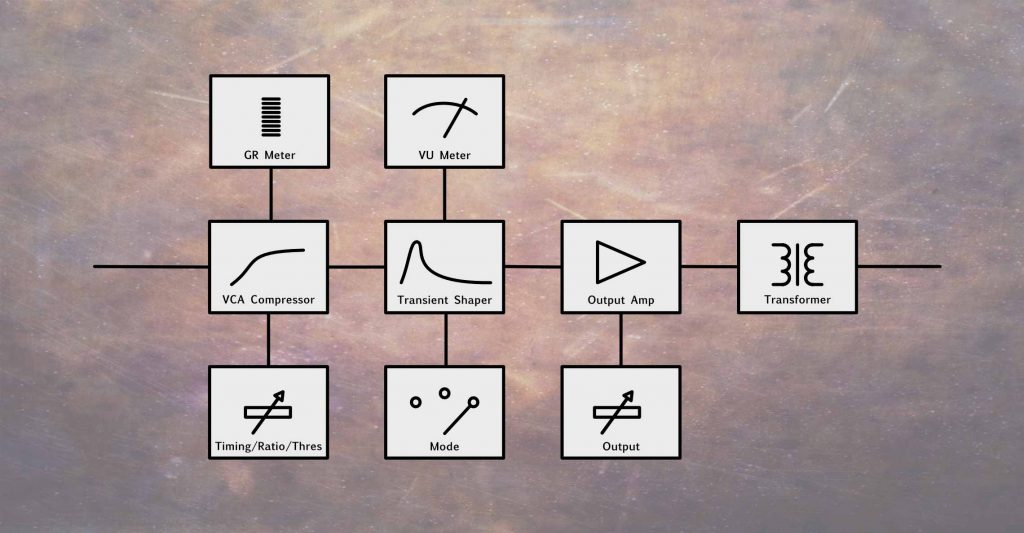
From what I’ve heard from the device and from what Mr Krush explained the unit functions as such: The saturation circuit bends the tops of transients, but also produces high doses of harmonic distortion (mainly third order, odd harmonics). The Flux mode being the window that decides how much of the transients enter the saturation circuit can control 2 factors.
- Brightness – How much of the signal you infuse with this harmonic distortion. Odd harmonics are brighter and edgier. Paradoxically the more you open the window – the darker and more saturated the sound (Eisen).
- Attack/Sustain – The less you open the window – the less you bend transients so the source material keeps more of its attack (Nickel).
Intensity on the other hand has a much less pronounced effect than the Gain/Output combo but is useful for fine-tuning the amount of bend.
Insight
To get more answers and to reveal what exactly is happening under the bonnet we ran a sine- wave (1kHz) through the Magnetismus 2 and started turning some knobs whilst observing the outgoing signal through Izotope’s spectrogram – “Insight”.
All 3 Flux modes produced noticeable harmonics even with both Gain and Intensity set to 0. As expected “Eisen” had the least harmonic impact, whist “Kobalt” and “Nickel” had progressively extended harmonics all throughout the upper mids and highs.
Driving the Gain all the way to +10 and equally compensating with the Output expectedly produced growth of harmonic content going from mild saturation to complete annihilation of the sine-wave.

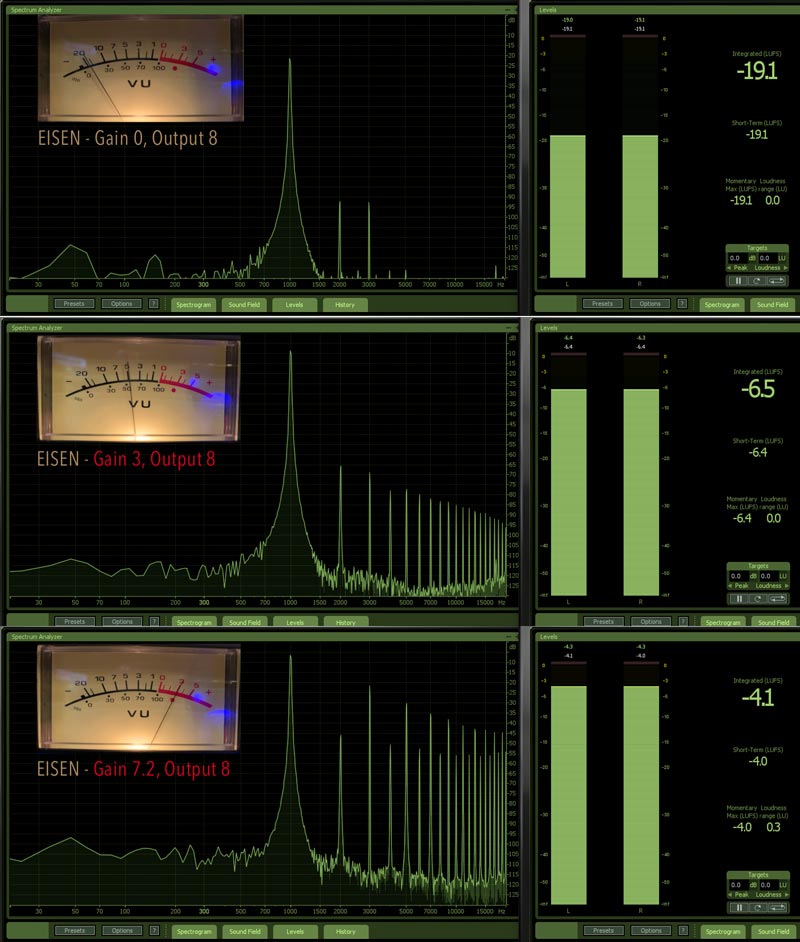
What caught my attention was an unexpected anomaly by the Output knob, which occurred in all 3 modes.
When pushing the Make-up Gain without compensating with the Output trim we were getting readings of mild and steady-growing harmonics with Gain positions 0-2.9. As soon as the Gain knob reached position 3, with the Output maintaining its position at 8, the Magnetismus reached a breaking point for its output transformers. It is as if the Magnetismus kicked into gear by producing rich and exaggerated harmonics and reached maximum saturation & level at around Gain position 7.2 before the wave started to collapse on itself.
That suggests that the so-called “finishing
touch” transformers can be driven to
insanity and can produce some wild results for sound-design and music production.
In Use
TRANSIENT SHAPING
With all said and done the only thing that matters is how the unit sounds. When used on individual drums or whole kits the Magnetismus can be a sort of a Swiss-army-knife as it can shape not only the transients but the overall sound and feel of the drums.
The VCA’s faster timings with generous ratios were able to tuck down even the sharpest of transients, leaving me with bigger tails. The slower timings were making the drums snappier and punchier. To my ears, the latter seemed to be the more favorable choice for the Magnetismus. Overall my impressions are that this compressor begs to be pushed hard on transient-heavy sources. You can indeed use it subtly, but I believe this particular VCA shines when pushed as it can definitely take it.
The fun really began when we were carving the transients with the compressor and feeding them into the saturation circuit for shaping. With the VCA we could make any drum kit punchier beyond what might be necessary for the track and using the saturator we could then tame back those super pokey transients. The end-result was drums that were bigger, fatter, punchers, thicker, and just more of what they already were.
Given that both the VCA and the Saturator sound so good when pushed I found this machine to be a great parallel processor, which begs the question of why they didn’t include a wet/dry knob on it. In the following video, I abused a raw drum kit with the Magnetismus, from mild tape-like saturation to audible distortion. I tested 3 different settings on the device and each of them included a 50/50 blend between the processed and unprocessed signal.
[INSERT VIDEO]TAPE SATURATION
When I’m referring to tape saturation in the context of the Magnetismus I am only talking about the saturation itself, the bending of transients, and not the overall sound of tape. What people often think about when they hear tape is that low-end bump and smoothening of the top-end, which makes the tape sounding “warm”. Those things are not as pronounced on the Magnetismus.
The lows come out thicker, but nowhere near as boosted as the lows from most reputable tape-machines. The high-end on the other hand is sharply detailed rather than tamed, even at the darkest Flux mode – Eisen. One could argue that this should be the sound on modern tape-saturators as music today is much more high-frequency demanding than it was in the hey-day of Tape, but that is all subjective.
HIGH-FREQUENCIES – A COURSE OR A BLESSING
As heard in the video above, this machine can seriously push the high-frequencies forward in the mix when going in heavy saturation, especially in Nickel mode. To go around this potential issue on group-processing I found myself having to mix into the Magnetismus by creating a dedicated balance where the cymbals might be slightly lower on the way in. However, I didn’t have the chance to demonstrate that in the video.
On several occasions I found myself using the Magnetismus on poorly recorded sterile digital productions to get more life out of them. In such repair work, this transient shaper turned out to be a useful tool as I was able to thicken up flimsy sources and even add aggression into the performance. Equally as useful, the extra pronounced high-end saved several drum tracks where the high-hats were too low in the stereo stem.
PERCEIVED LOUDNESS
This has become a hot topic as we enter into the third decade of the century and there are plenty of tools that deliver perceived loudness. Some however can achieve it easier than others.
Due to the lush harmonics and saturation of the Magnetismus, I found myself adding significant levels of perceived volume without actually making the source louder. Signals just passing through the device with zero compression or saturation appeared to be slightly louder and more present on the way out, without any added gain.
Tip: Mild doses of harmonic saturation can definitely make a mix stand out. Over-using it of course can suck the air and life out of the track by filling all the empty spaces with harmonic distortion.
THE SWEET-SPOT
Remember that breaking point of the output transformers I found on the spectrogram? When running a whole drum kit through the Magnetismus and keeping it right at the edge of that breaking point without allowing for nasty transformer distortion the drums reach maximum richness, fullness, and overall density.
Going beyond that point is where we entered the non-subtle uses. When pushed, the Magnetismus was able to make mellow synths aggressively distorted while gentle drum-tapping sound like John Bonham on steroids.
Verdict
The Magnetismus 2 is yet another fantastic processor by Tegeler Audio Manufaktur. The deceivingly small circuit-board inside is powering one of the most capable analog transient sharpers I have used so far.
Its abundant controls can transform it into a subtle device for adding tape-like glue to a mix, as well as presence, tightness, and forwardness or an absolute monster capable of annihilating anything at its path.
While it can add punch to materials that lack a great deal of it, it can also make them thicker, richer, and fuller, which can not be achieved with all transient shapers. The perceived volume added by the harmonic distortion is only the tip of the iceberg.
This machine is versatile enough to be used in recording, mixing, sound design, and if you are crazy enough even in mastering.
Its asking price of €1.599 (EUR) is substantial and sits on the border of the pro-audio market, but it’s also what you’d expect to pay for a half-decent VCA. The stereo compressor found in the Magnetismus is a lot more than decent and combined with the saturator it’s a no-brainer for the money.
Alternatives
The closest alternative to the Magnetismus 2 is the Empirical Labs Fatso EL7X, coming at around €2.850 (EUR). The Fatso has the advantage of the “Warmth” control, which tames down high-end harshness, but the Magnetismus offers a much more versatile compressor with its 11 timing settings and variable ratios as well as much more control over the fine-tuning of the saturation circuit. When push comes to shove the Magnetismus can be much more brittle and extreme, while the Fatso would perform more forgivingly overall.


